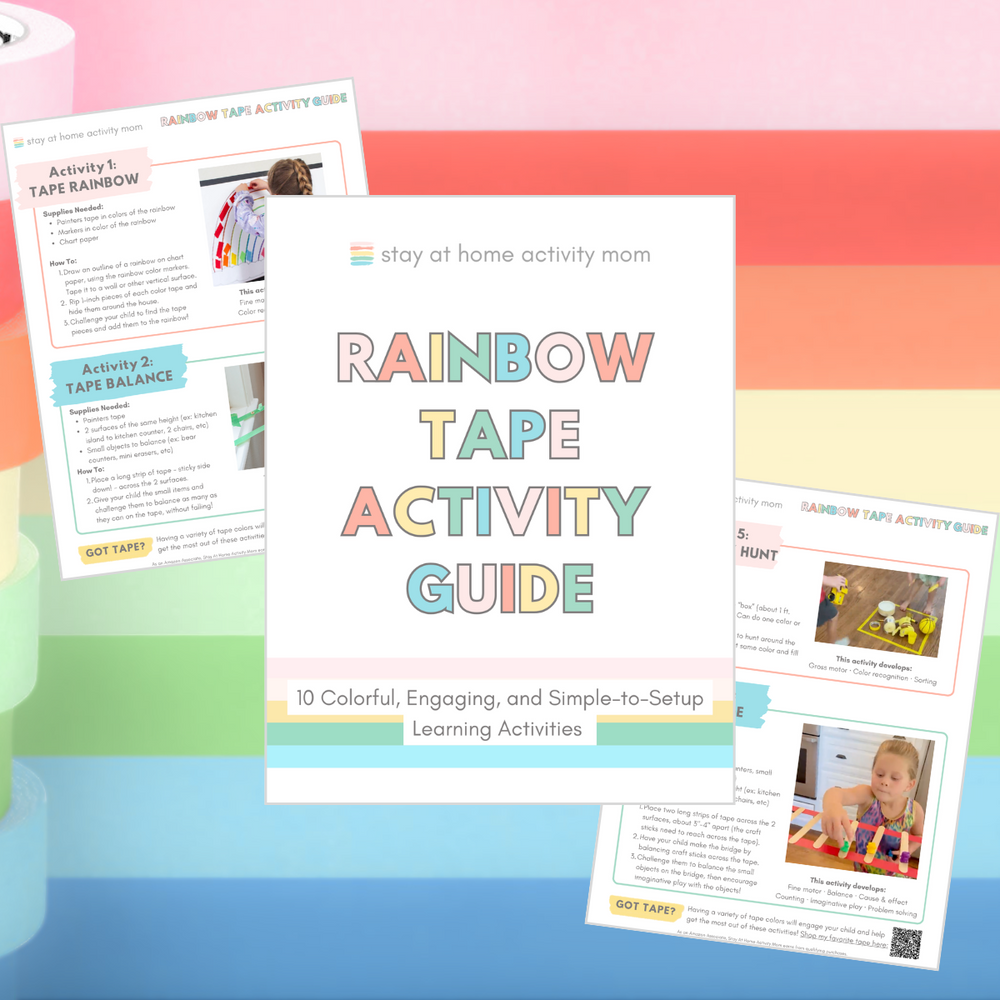

Are you searching for engaging letter recognition activities that don't require expensive materials or complicated prep work? This magical crayon resist matching game transforms simple supplies into a learning adventure that will have your little ones so excited to practice their letters!
As a former educator and mom of three, I've discovered that the most effective letter recognition activities combine hands-on exploration with visual discovery. These letter recognition activities check all the boxes: they're budget-friendly, mess-contained, and create that "wow" moment when hidden letters magically appear through watercolor painting.
What Makes This Letter Recognition Activity Special
This isn't another alphabet worksheet. This interactive learning experience engages multiple senses while building crucial pre-reading skills. When children use watercolors to reveal hidden letters, they're not just having fun – they're strengthening letter-sound connections, developing fine motor skills, and building confidence in letter identification.
The beauty of easy letter recognition activities like this one lies in their simplicity. You probably already have these materials at home, making it perfect for spontaneous learning moments, calm down activities, or quiet time.
Materials Needed (You Probably Have These!)
- Two pieces of white paper (copy paper or cardstock work perfectly)
- Black Sharpie marker (permanent marker is key)
- White crayon (the magic ingredient!)
- Watercolor paints (basic set is fine)
- Paintbrush (any size works)
- Small container of water
- Paper towels for cleanup
The total cost for this activity is practically nothing, yet it delivers powerful learning outcomes that rival expensive educational toys. That's the kind of smart parenting investment I love sharing with fellow moms!


Step-by-Step Instructions for Success
- Gather your materials. Optional: Cover your surface with a plastic tablecloth or newspaper – while this activity isn't particularly messy, watercolors can occasionally drip or Sharpie can bleed through, depending on the paper thickness.
- Create the uppercase letter sheet. Take your first piece of paper and use the black Sharpie to write uppercase letters randomly across the page. Don't worry about perfect spacing or organization – the random placement actually makes the matching game more challenging and engaging for developing minds.
- Draw 26 heart shapes on your second piece of paper, large enough for you to also write a lowercase letter inside. You can choose a different simple shape if preferred!
- Write lowercase letters in each heart. This is the where the magic begins! Use your white crayon to write one lowercase letter inside each heart. Press firmly as you write – the heavier the wax application, the more dramatic the reveal will be when you add watercolor.
- Set up your watercolor station. Fill a small container with water and set up your brush and paints.
- Begin the magic reveal of lowercase letters! Have your child paint over each heart with gentle brush strokes. Watch their excitement as the white crayon letters resist the watercolor paint, creating a magical letter reveal! This moment of discovery never gets old, even after multiple rounds of this activity!
- Find the matching uppercase letters. As each lowercase letter appears, have your child find the matching uppercase letter on the first sheet and cross it out or mark it with a dot marker.
Throughout the activity, ask your child open-ended questions like "What do you think will happen when we paint over this heart?" or "Can you tell me what sound this letter makes?"
Troubleshooting Common Challenges
Problem: White crayon marks aren't showing up clearly
Solution: Press harder with the crayon. Also real wax crayons can be a bit easier to see than washable crayons.
Problem: Watercolor is too watery and runs everywhere
Solution: Use less water on your brush and blot excess on paper towels before painting
Educational Benefits That Matter
Cognitive Development
Letter recognition activities like this one strengthen neural pathways essential for reading readiness. When children actively search for matching letters, they're developing visual discrimination skills and letter-sound associations that form the foundation of literacy.
The matching component adds a memory element that challenges working memory and attention to detail. These cognitive skills transfer to many other learning areas, making these letter recognition activities a valuable investment in your child's overall development.
Fine Motor Skill Building
Holding a paintbrush, controlling water application, and making precise movements all contribute to fine motor development. These same muscles and coordination patterns will later support pencil grip and handwriting skills.
The act of crossing out matched letters provides additional fine motor practice!
Multi-Sensory Learning
This activity engages visual, tactile, and kinesthetic learning styles simultaneously. Children see the letters appear, feel the brush and paper textures, and move their bodies as they search for matches. This multi-sensory approach helps information stick!
Crayon Resist Letter Recognition Activities Variations
Seasonal Themes
Replace hearts with pumpkin shapes for Fall, snowflakes for Winter, or flowers for Spring.
Number Recognition
Use the same technique with numbers 1-20 hidden in different shapes. This extends the learning value and gives you another tool for math readiness.
Shape Recognition
Hide different geometric shapes instead of letters, perfect for younger toddlers who aren't ready for letter work yet.
Your Turn to Play!
This magical letter matching activity proves that the best letter recognition activities combine education with wonder. Using just paper, crayons, and paint, you're creating an experience that builds essential pre-reading skills while making learning feel like play.
Remember, consistency matters more than perfection. Regular exposure to letter recognition activities, even simple ones like this, builds the foundation your child needs for reading success!
Try this activity today and watch your little learner's eyes light up when those hidden letters magically appear!
Disclaimer: This post may contain affiliate links. If you purchase through these links, I may earn a small commission at no additional cost to you. All recommendations are based on items I personally use and love with my own children.






